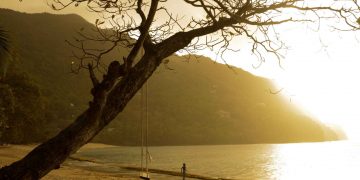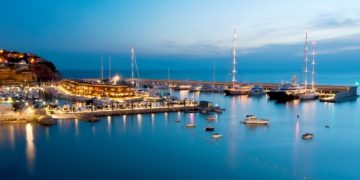You have not seen the best of Spain until you have visited Extremadura. Nestled in the southwest region of Spain, Extremadura is a “must-visit” destination in Spain. This rich destination, home to Season 7 series of the Game of Thrones is easily accessible from Seville and Madrid in Spain and via Lisbon in Portugal. Extremadura is divided into two provinces; Badajoz and Cáceres, which are the two largest in Spain. The most fascinating thing about Extremadura is its history, culture and authenticity. This is the place where the romans, Visigoths, Moors and Sephardi Jews lived and there are traces of their existence all over the destination, especially in Merida, home to most of Spain’s roman remains. Extremadura’s archaeological remains are very evident in castles, churches and cathedrals. You can also find remains in the Jewish Quarters, towers and bridges.
Such is the beauty of nature in Extremadura that three places in Extremadura have been classified as UNESCO World Heritage sites; namely, the Roman City of Mérida, the Monastery of Santa Maria in Guadalupe and the Old Town of Caceres. Two other spaces have been recognised by UNESCO as World Heritage Sites; the Biosphere Reserve, Monfrague National Park and Tajo International Nature Park.
We travelled to Extremadura via Madrid and rented a car from Madrid’s Adolfo Suárez Madrid–Barajas Airport, commonly known as Madrid–Barajas Airport, the main international airport serving Madrid in Spain. Our selected car rental company was Enterprise -rent-a-car. Madrid–Barajas Airport has a good selection of car rental companies. We set off on the A5 for the 3-hour journey to Spain’s best kept secret. Our first destination was Mérida which continues along the A-66, along this dual carriage way you will find Trujillo, Mérida and Badajoz before reaching Portugal; for Cáceres, you will need to take the Trujillo exit A-58.
What to expect
Extremadura with its 1,087,778 inhabitants is a gem waiting to be explored. The Roman city of Mérida has been classified as a UNESCO World Heritage Site. Cáceres (Malpartida de Cáceres), Los Barruecos and Trujillo were filming destinations for The Game of Thrones Series 7.
Above all, the people themselves are so welcoming and friendly. It is so pleasing and heart-warming to see how three generations of families spend time together. During our short stay in Mérida, several religious activities such as the first holy communion and baptism and Mothers’ day celebrations. Almost the whole of Extremadura was a meeting place for friends and generations of families. Families met for lunches and dinners and although almost every restaurant was fully booked, restaurant owners still managed to find spaces in the lively squares and open spaces.
Top Ten Things to do and see in Extremadura
1. Visit a Quirky Museum – Museo Vostell-Malpartida
This is the quirkiest museum ever until we discover another one. What awaits you in this museum will surprise you. The location is quite remote, and one needs a car to reach it, but it all becomes worth it when you arrive. The museum was created in 1976 by Wolf Vostell in Los Baruecos and divided into three parts of contemporary art. The first part, the Wolf and Mercedes Vostell collection of the museum, displays a collection of man’s excessive and irrational devotion to cars, television or concrete which have been transformed to warn us of the conflicts enclosed in the society in which we live. There is also the Fluxus collection what was donated to Extremedura by the Italian collector Gino DiMaggio and is made up of a group of 250 works by 31 North American, European and Asian Artists. The whole collection and visit are rounded off by a collection of conceptual artists made up of 60 works including pictures, picture objects, sculptures and installation belonging to 48 artists that have had a special connection to Vostell Malpartida Museum activities since it started in 1976. The museum is a real “must-visit” whenever you are in the region.

2. Take A Dip in The Balneario de Alange in Badajoz – it is all about the water
You think you have seen it all in the World of Spas, until you visit the Balneario de Alange in Badajoz, within the Extremadura region of Spain. This unique Spanish speaking very affordable spa resort has a unique Roman history. When you arrive at the spa it is as if you have just entered a sanctuary of some sort; and perhaps quite right too because the Balneario de Alange is really a spa sanctuary. The quality of this spa isn’t necessarily measured by square footage or even luxury, but rather in the quiet, practiced skill of its therapists, the variety and calibre of its treatments and how guests feel at the end of their treatment.

3. Visit Merida
Mérida is the capital of western Spain’s Extremadura region; it was founded by the Romans in the 1st century B.C. Remains of the ancient city include the still-used Teatro Romano, which has a double tier of columns rising on stage. The ancient Puente Romano, a 792m bridge spanning the Río Guadiana, adjoins the Alcazaba, a 9th-century Islamic fortress built over Roman walls.

Roman theatre and amphitheatre, remains of the ancient city in 1st Century BC
The streets of Merida are lined with boutiques and tapas bars. However, there are two places you can’t possibly miss; they are the Roman theatre and amphitheatre, and the National Museum of Roman Art. The Roman theatre and amphitheatre are so real that open-air theatre performances are held there on summer nights in its monumental setting. It has history stretching back over 2000 years. As you enter the city over its Roman bridge, you come face-to-face with an Arab fortress. This is Mérida, the World Heritage City in Extremadura. Organise your day so as to see the monuments by day or illuminated by night. You’ll need to leave at least one hour for each one, although if you really want to soak up the magical atmosphere of the theatre and linger a little in the amphitheatre, we recommend dedicating a total of around three hours for both. It is a good idea to visit one in the morning and another in the afternoon. This way you can make the most of the morning to visit other points of interest a little further away, then enjoy a pleasant stroll near the shopping area in the evening.
4. Visit Cáceres
Cáceres is a city in the Extremadura region. Founded by the ancient Romans, it retains widespread evidence of subsequent occupation by many different cultures. Its old town, Ciudad Monumental, has a mix of Gothic and Renaissance architecture, with cobbled medieval streets, fortified houses and palaces. Encircled by 12th-century Moorish walls, it also has around 30 towers, some occupied by nesting storks.

The old quarter of Cáceres, which was declared a World Heritage Site by UNESCO in 1986, is one of the most complete and best conserved town centres in Europe. It consists of buildings from the Middle Ages and the Renaissance. The city wall divides its space into two main areas. Inside the city walls, we find the lion’s share of the best-known buildings of this city, such as the Cathedral of Santa María, the Palacio de las Veletas, the palaces of the Golfines, la Casa del Sol or the Bujaco Tower.
As soon as you pass under the Estrella arch, from the Central Square, you take a step back in time and become completely immersed in the history of the old quarter of this bimillenary city. The history of Caceres is very old indeed. It goes back to the Maltravieso cave, which contains Later Palaeolithic cave paintings (you can see images of these paintings in the visitors’ centre).
But the true origin of the city and of its old quarter goes back to 34 B.C., the year in which Gaius Norbanus Flaccus founded the Norba Caesarina, which is now Cáceres. This town was reconquered by Alfonso IX on 23 April 1229, on St George’s Day, who since then has been its patron saint. From that date on, many palaces and monuments were built, buildings which you can now see in the old quarter, and which were at their peak during the Catholic Monarchs era (fifteenth and sixteenth centuries).
If you want to explore the history of the old quarter in greater depth, you have to visit the city’s museums: the Cáceres museum in Plaza de las Veletas and Casa de los Caballos, where you will find the archaeological remains found in the city; the exhibition centre on the ramparts of Santa Ana, and the provincial Council building. The Caceres Holy Week, which draws tourists from all over the world, has its own special museum in the Church of La Preciosa Sangre.
5.While in Cáceres do not miss out on the Bujaco Tower (Torre de Bujaco)
This is one of the most unique and well-preserved towers located in the main square of Cáceres –the Plaza Mayor. It was built in the 12th century after Ferdinand II of León conquered the city. Its name, however, is derived from Caliph Abú-Ya’qub, whose troops gained control of Cáceres in 1173. Christian Knights from the Order of Chivalry of Santiago used the tower as a defense against the Arabs, and legend has it that they had their throats cut at the tower by Arab troops. In the 16th and 17th centuries people of Cáceres knew the stone structure as the “Clock Tower.”
6. Explore the Arch of the Star

Located right next to the Torre de Bujaco is the Arch of the Star, which is one of the five access gates of Cáceres. It was constructed in the 18th Century from 15th Century ruins and designed by Manuel de Lara y Churriguera. Its architecture was changed to a Baroque style in 1726 and altered to make it larger for carriages to fit through the space when riding through. The Virgen de la Estrella-or Virgin of the Star-the icon after which the arch is named can be seen inside a small temple beyond the gate.
7. Do not miss Emirate de la Paz
Conveniently next to the Bujaco Tower and the Arch of the Star, visitors will encounter the Emirate de la Paz. This hermitage was built on top of the ruins of the San Benito chapel during the Renaissance period. Inside, visitors will find paintings, an impressive dome, and the image of the Virgen de la Paz.
8. Explore the Churches
Church de San Mateo
Although we only had the chance to see this church from the outside, it looked well-preserved. It has been reconstructed various times since it was originally built. Its architecture demonstrates Baroque, Gothic, and Renaissance styles. The chapel is home to the tombs of Spanish noblemen including the notorious Ovando family whose distant relatives include Hernán Cortés.
Church de Santa María
The adorable aspect of this church is the amazing view it offers from the top. This is where visitors experience one of the best views in the city of Cáceres. It was built on the ruins of a mosque in the 13th century. At the front of the building stands the statue of San Pedro de Alcántara, by Pérez Comendador. There is a sacred art museum inside the Church.
9.Visit the Palace of the Golfines
The Palace of the Golfines was built after the Spanish Reconquista and has two towers. It is the most representative construction of Cáceres. On the outside of the front windows you will find the Catholic Kings’ coat of arms. Underneath it is the coat of arms of the Golfines family. This palace was used as a second home for catholic royalty when they were visiting the city.10. Cáceres Episcopal Palace
The Cáceres Palace in Plaza de Santa María was originally built in the 13th century as a Parish house. The front of the building is Renaissance style and decorated with medallions on the rounded doors. This is the home of the Catholic Bishop who governs the diocese Coria Cáceres. Visitors have free access to its courtyard.
10. House of the Sun
This mansion from the 15th century has the coat of arms that the Solis noble family (family of the sun). The Solis family helped Cáceres become a prosperous city in its glory days. Their family’s coat-of-arms which can be seen at the entrance of the mansion features an image of a face inside of a sun with snakes biting at the rays. Visitors are free to enjoythe open-air courtyard where the Solis family used to sit out and enjoy their summers within their glorious abode.
11. Trujillo
Trujillo is a municipality located in the province of Cáceres, in the autonomous community of Extremadura, Spain. It has about 9,086 inhabitants. Originally settled on a granite knoll which was readily fortified, the town now extends to the South East of its original site. Trujillo is both a centre for tourism, with over 25 hotels and a regional market town. The old town is made up of medieval and renaissance buildings. Many of these were built or enriched by the conquistadors born in the city. These include, the conquerors of Peru, Francisco Pizarro and his brothers, Francisco de Orellana and Hernando de Alarcón.Pizarro’s equestrian statue stands in the main square, the Plaza Mayor. The most important monuments are the castle (old Arab fortress), the church of Santa María (thirteenth century), and the church of San Francisco.

The Castillo (Castle) in Trujillo
Things to do in Trujillo
• Visit the Castillo, a medieval stone fortress, which sits on top of a hill overlooking the town centre.
• There is also the Coria Museum which displays the regional links between Spain and Latin America.
• Visit the Casa Museo de Pizarro the former home of conquistador Francisco Pizarro, who conquered the Inca empire. An equestrian statue dedicated to him stands in Plaza Mayor.















